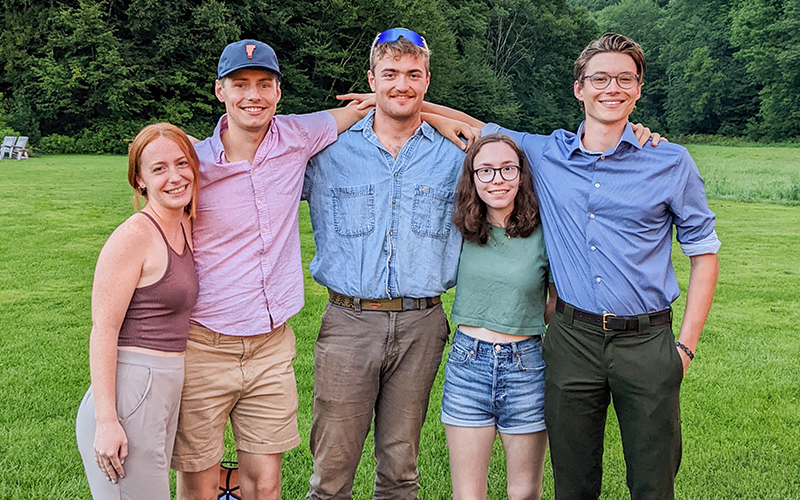By Natalie Bingham, UVM knotweed intern for Warren
(Editor’s Note: This is the first part of Bingham’s midsummer report on knotweed eradication efforts in Warren. The second part, coming next week covers efforts in Waitsfield.)
This summer the knotweed interns are back in The Valley helping the Warren and Waitsfield Conservation Commissions’ effort to manage Japanese knotweed. This year we have a group of five college students and recent college graduates all from the University of Vermont. To manage the knotweed, interns mainly go out into the field to cut, pull, and dig up the invasive plants at over 150 individual sites between Warren and Waitsfield. When they are not extracting knotweed, the team’s extra efforts go into exploring alternative management techniques like mowing and smothering and finding ways to interact with the local community and get them involved. Local volunteers are playing a crucial role this year as well, as they are working alongside the interns.
In Warren the work has remained focused on Brook Road, East Warren Road, Fuller Hill Road, Hazel Brown Road, Lincoln Gap, Plunkton Road, Prickly Mountain Road Quayl Bend, Roxbury Gap, School Road, the covered bridge and Wabanaki park.
The interns have mainly been taking care of these sites, but town volunteers have been manning some sites to help. Interns have also been taking on Riverside Park and 15 sites on the upper Mad River in the Granville Gulf this summer. Every site has been visited two to three times so far this summer and is practically cleared.
In addition to management strategies and physically controlling the knotweed, the team has also been very interested in the scientific and technological aspects of knotweed growth and movement. They met with researchers Brian Colleran and Rebecca Diehl who shared their work in related fields and helped them consider what the future of knotweed research and management might look like. Inspired by this, two interns have been working on mapping knotweed locations all over Warren using GIS. This has provided a large-scale picture of what the knotweed problem looks like in the town. They have additionally been using their GIS skills to track knotweed in Warren.
This year the team is focusing heavily on community outreach. Throughout June, the team did personal consultations for town residents. The team spent time at each place showing the landowners how to remove knotweed effectively.
Improved signage has been another goal. Posters from previous years have been refurbished to encompass all management strategies and provide greater detail. These are posted at all active sites in Warren and Waitsfield. To reach a wider audience, they created an Instagram page: @madriverknotweed, where they post regularly.
GoFundMe created to help fund interns’ knotweed work
Warren Conservation Commissioner Jito Coleman and others have launced a GoFundMe page to help fund the continued work of the UVM interns in local towns to eradicate and manage knotweed. Coleman has $2,500 in matching funds to help the effort. Here’s a link: https://gofund.me/97a249b0












